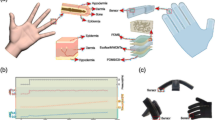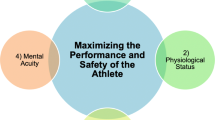Abstract
Wearable technologies are frequently mentioned as instruments that can make it possible to gather quantitative biomechanical data in the field invisibly, over long periods of time, and with few geographical restrictions. Despite frequent claims to the contrary, it appears that little effort is being made to ground these claims in the biomechanical research connecting wearable quantities to musculoskeletal injuries and to determining how ready these biomechanical approaches are for implementation in actual practise. Machine learning technology might aid in facilitating medical decision-making at both the clinical and diagnostic levels. The quantum sensor for sports biomechanics in injury prevention is the foundation of this survey. For example, one of the most important aspects of preventing and minimising damage in motion is the prediction of sports injuries. Current strategy is constrained by its failure to discover predictors despite extensive attempts to forecast sports injuries. Danger of harm to athletes must be taken into account while developing methods to prevent work-related accidents and lower associated risks. Indicators are being assessed in a variety of ways to determine injury risk factors.




Similar content being viewed by others
Data availability
All the data’s available in the manuscript.
References
Ai, Z.: Quantitative CT study of martial arts sports injuries based on image quality. J. Vis. Commun. Image Represent. 60, 417–425 (2019)
Ang, Z.: Application of IoT technology based on neural networks in basketball training motion capture and injury prevention. Prev. Med. 175, 107660 (2023)
Gençoğlu, M.T., Agarwal, P.: Use of quantum differential equations in Sonic processes. Appl. Math. Nonlinear Sci. 6(1), 21–28 (2021)
Hassabo, A.G., Elmorsy, H., Gamal, N., Sediek, A., Saad, F., Hegazy, B.M., Othman, H.: Applications of Nanotechnology in the creation of Smart Sportswear for enhanced sports performance: Efficiency and comfort. J. Textiles Color. Polym. Sci. 20(1), 11–28 (2023)
Jones, W.R.: Water resource prospects for the next 50 years on the water planet: Personal perspectives on a shared history from Earth Day, the Fourth Industrial Revolution and One Health to the futures of alternative energy, bioconvergence and quantum computing. Water Int. 46(7–8), 1158–1186 (2021)
Jun, W., Zhiqiang, Z., Rui, T., Dong, L., Tie, L.: Research on recognition of ice and snow athletes based on feature extraction and cloud computing platform. Microprocess. Microsyst. 80, 103338 (2021)
Li, J.: Application of Nanotubes Combined with Ethnic Sports Rehabilitation Therapy in the Treatment of Patients with Knee Arthritis. Journal of Nanomaterials, 2022. (2022)
Li, L.: Summary of the Research Status of Artificial Intelligence in sports performance analysis of athletes. Open. Access. Library Journal. 10(8), 1–7 (2023)
Li, G., Yang, X.: The Training Gesture Recognition and early warning method based on CNN Model. Wireless Pers. Commun., 1–16. (2023)
Li, B., Wang, L., Jiang, Q., Li, W., Huang, R.: Sports Risk Prediction Model based on automatic encoder and convolutional neural network. Appl. Sci. 13(13), 7839 (2023)
Lian, W., Wang, J.: Repair effect of nanomaterials on meniscus injury induced by calisthenics exercise. Journal of Nanomaterials, 2022. (2022)
Luo, W., Wang, Y., Lin, F., Liu, Y., Gu, R., Liu, W., Xiao, C.: Selenium-doped carbon quantum dots efficiently ameliorate secondary spinal cord injury via scavenging reactive oxygen species. Int. J. Nanomed., 10113–10125. (2020)
Mamand, D.M., Anwer, K., T. M., Qadr, H.M.: Corrosion inhibition performance of organic compounds and theoretical calculations based on density functional theory (DFT). Corrosion Reviews, (0). (2023)
Omolara, A.E., Alabdulatif, A., Abiodun, O.I., Alawida, M., Alabdulatif, A., Arshad, H.: The internet of things security: A survey encompassing unexplored areas and new insights. Computers & Security. 112, 102494 (2022)
Ramirez-GarciaLuna, J.L., Bartlett, R., Arriaga-Caballero, J.E., Fraser, R.D., Saiko, G.: Infrared thermography in wound care, Surgery, and sports medicine: A review. Front. Physiol. 13, 210 (2022)
Read, G.J., Salmon, P.M., Thompson, J., McClure, R.J.: Simulating the behaviour of complex systems: Computational modelling in ergonomics. Ergonomics. 63(8), 931–937 (2020)
Schmidt, C.J., Rauk, L., Cunningham, R.M., Zimmerman, M.A., Roche, J.S., Carter, P.M.: How multi-disciplinary Research Centers and Networks Can Advance the Science of Firearm Injury Prevention. The ANNALS of the American Academy of Political and Social Science. 704(1), 242–266 (2022)
Shi, G.: Diagnosis results of athletes with ankle joint pain based on the neutrosophic ensemble image. Int. J. BioMed. Eng. Technol. 42(1), 78–95 (2023)
Sun, Y., Fan, T.: Construction of Wearable Physical Exercise Management System based on Artificial Intelligence Technology. In 2023 International Conference on Applied Intelligence and Sustainable Computing (ICAISC) (pp. 1–6). IEEE. (2023), June
Sun, J., Du, H., Chen, Z., Wang, L., Shen, G.: MXene quantum dot within natural 3D watermelon peel matrix for biocompatible flexible sensing platform. Nano Res., 1–7. (2021)
Torgler, B.: Big data, artificial intelligence, and quantum computing in sports. 21st Century Sports: How Technologies Will Change Sports in the Digital Age, 153–173. (2020)
Ugya, A.Y., Meguellati, K.: Quantum technology a tool for sequencing of the ratio DSS/DNA modifications for the development of new DNA-binding proteins. Egypt. J. Basic Appl. Sci. 9(1), 308–323 (2022)
Ur Rasool, R., Ahmad, H.F., Rafique, W., Qayyum, A., Qadir, J., Anwar, Z.: Quantum computing for healthcare: A review. Future Internet. 15(3), 94 (2023)
Vasquez-Bonilla, A.A., Brazo-Sayavera, J., Timón, R., Olcina, G.: Monitoring muscle oxygen asymmetry as a strategy to prevent injuries in footballers. Res. Q. Exerc. Sport, 1–9. (2022)
Wang, L.: Digital assessment of the skill acquisition of table tennis after functional movement training. In Second International Conference on Statistics, Applied Mathematics, and Computing Science (CSAMCS 2022) (Vol. 12597, pp. 374–379). SPIE. (2023), March
Wang, D., Yang, J.S.: Analysis of sports injury estimation model based on mutation fuzzy neural network. Computational intelligence and neuroscience, 2021. (2021)
Wu, X., Zhou, J., Zheng, M., Chen, S., Wang, D., Anajemba, J., Uddin, M.: Cloud-based deep learning-assisted system for diagnosis of sports injuries. J. Cloud Comput. 11(1), 1–18 (2022)
Yang, G., Xu, X.: Sequence Video and Artificial Intelligence Assisted Basketball Injury Risk Early Warning Method. Mobile Information Systems, 2022. (2022)
Yu, C., Li, R.: Visual sensor image analysis and massage techniques to prevent and treat common injuries of sports dance practitioners. Computational and Mathematical Methods in Medicine, 2022. (2022)
Zhang, Y., Hou, X.: Application of video image processing in sports action recognition based on particle swarm optimization algorithm. Prev. Med., 107592. (2023)
Funding
No Funding.
Author information
Authors and Affiliations
Contributions
Z.Z.: Conceived and design the analysis, Writing- Original draft preparation, Collecting the Data, Contributed data and analysis stools, Performed and analysis, Wrote the Paper, Editing and Figure Design.
Corresponding author
Ethics declarations
Ethical approval
This article does not contain any studies with animals performed by any of the authors.
Competing interests
The authors declare no competing interests.
Additional information
Publisher’s Note
Springer Nature remains neutral with regard to jurisdictional claims in published maps and institutional affiliations.
Rights and permissions
Springer Nature or its licensor (e.g. a society or other partner) holds exclusive rights to this article under a publishing agreement with the author(s) or other rightsholder(s); author self-archiving of the accepted manuscript version of this article is solely governed by the terms of such publishing agreement and applicable law.
About this article
Cite this article
Zhang, Z. Quantum sensors in sports biomechanics in revolutionizing injury prevention. Opt Quant Electron 56, 311 (2024). https://doi.org/10.1007/s11082-023-06017-8
Received:
Accepted:
Published:
DOI: https://doi.org/10.1007/s11082-023-06017-8




